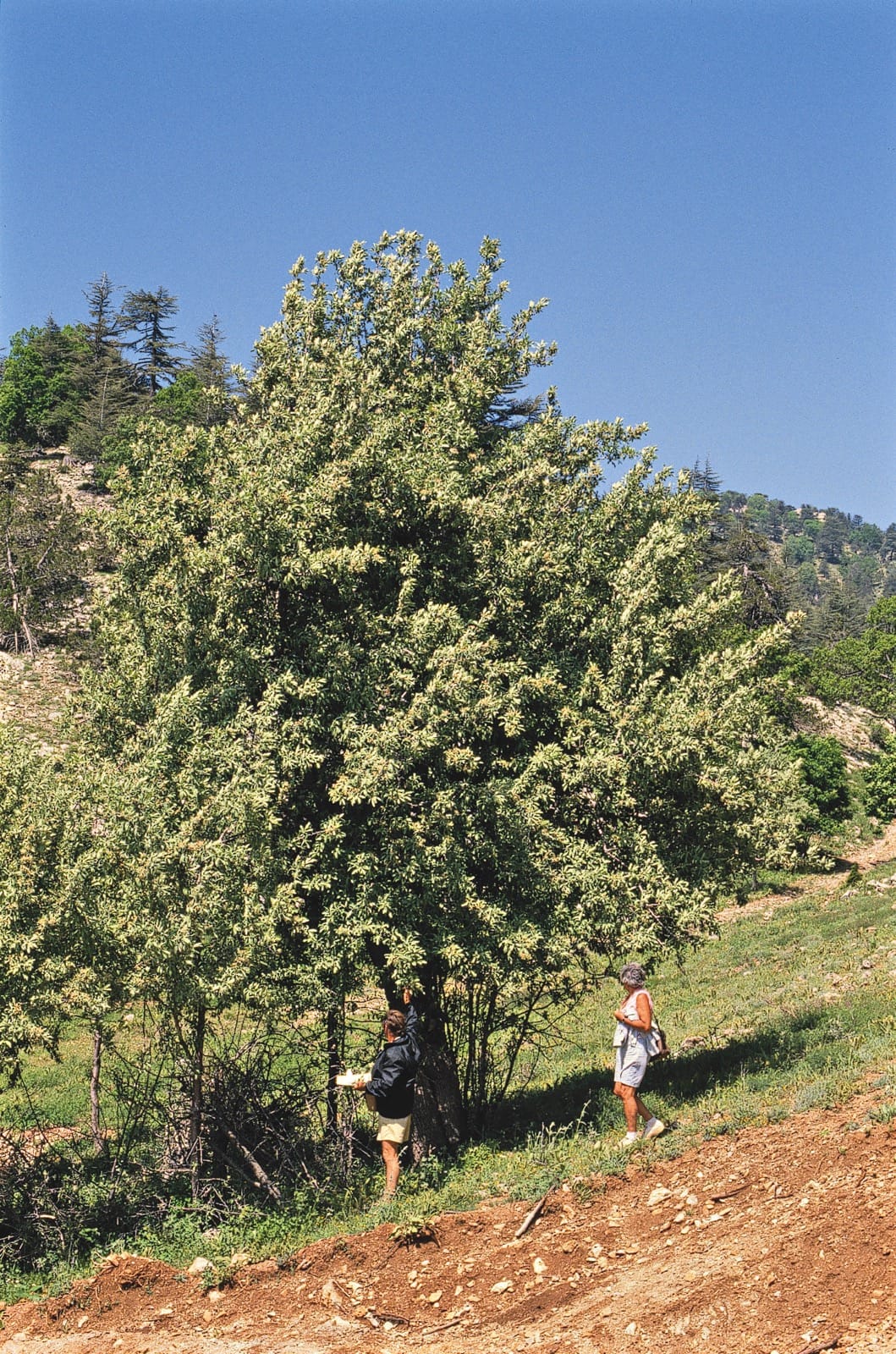Pyrus elaeagnifolia
Credits
Article from New Trees by John Grimshaw & Ross Bayton
Recommended citation
'Pyrus elaeagnifolia' from the website Trees and Shrubs Online (treesandshrubsonline.
Genus
Tree (rarely shrub) to 15 m, 0.5 m dbh. Branchlets robust, usually spiny, grey- or white-tomentose. Leaves deciduous, 3–8 × 1.5–4 cm, lanceolate to obovate, both surfaces covered with grey or white tomentum, margins entire, apex obtuse to acute; petiole 1–4 cm long; stipules caducous. Corymbs tomentose with 5–10 flowers; pedicels 1–2 cm long. Flowers white, ~3 cm diameter; hypanthium tomentose, sepals triangular, ~0.5 cm long, petals elliptical, ~1 cm long. Pomes single or in pairs, yellowish green, globose to pyriform, 2–3 cm diameter. Flowering April to May, fruiting autumn (Turkey). Terpó & Franco 1968, Schönbeck-Temesy 1969, Browicz 1972. Distribution ALBANIA; BULGARIA; GREECE; ROMANIA; TURKEY; UKRAINE: Crimea. Habitat Wooded hillsides. USDA Hardiness Zone 5. Conservation status Not evaluated. Illustration NTxvi, NT6. Cross-reference K75. Taxonomic note The specific epithet is often, if not usually, misspelled as ‘elaeagrifolia’; it is strange, when the foliage so obviously resembles that of an Elaeagnus, that this mistake should have become so entrenched in the literature and on labels. Browicz (1972) recognises P. elaeagnifolia subsp. kotschyana (Boiss) Browicz (see Krüssmann: K75), with unarmed branchlets and white- (rather than grey-) tomentose leaves.
It is very curious that this beautiful tree was not given a full description by Bean (1976b), as it was introduced to horticulture in about 1800 and has been widely planted – and is hardy – throughout our area. Its grey- or white-hairy foliage on upright stems makes it useful in the landscape. It is a much neater tree than the ubiquitous Pyrus salicifolia ‘Pendula’ with its often uncoordinated sprawl of limbs. White Sails is a selling name attached to the thornless subsp. kotschyana (N. Dunn, pers. comm. 2008).


